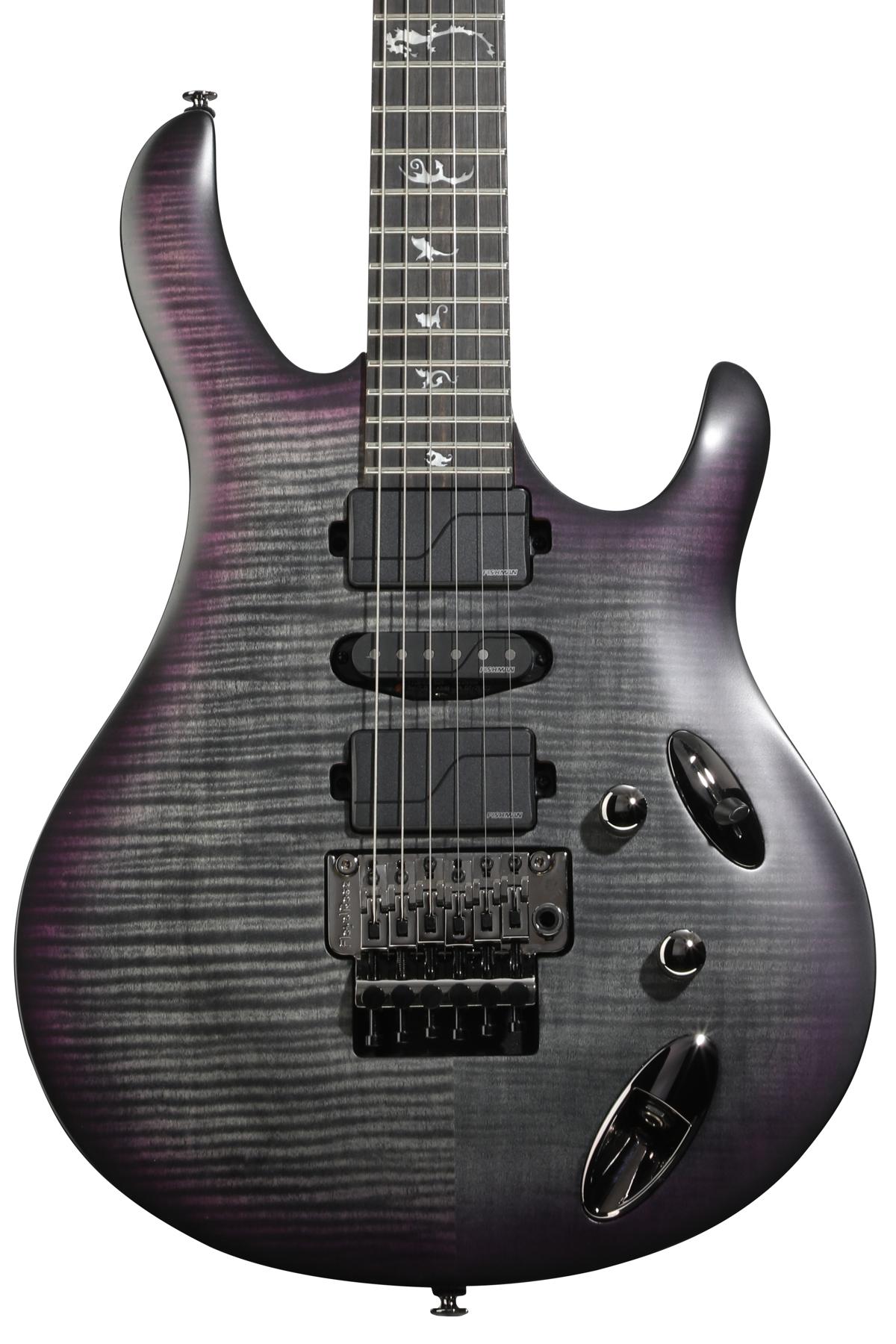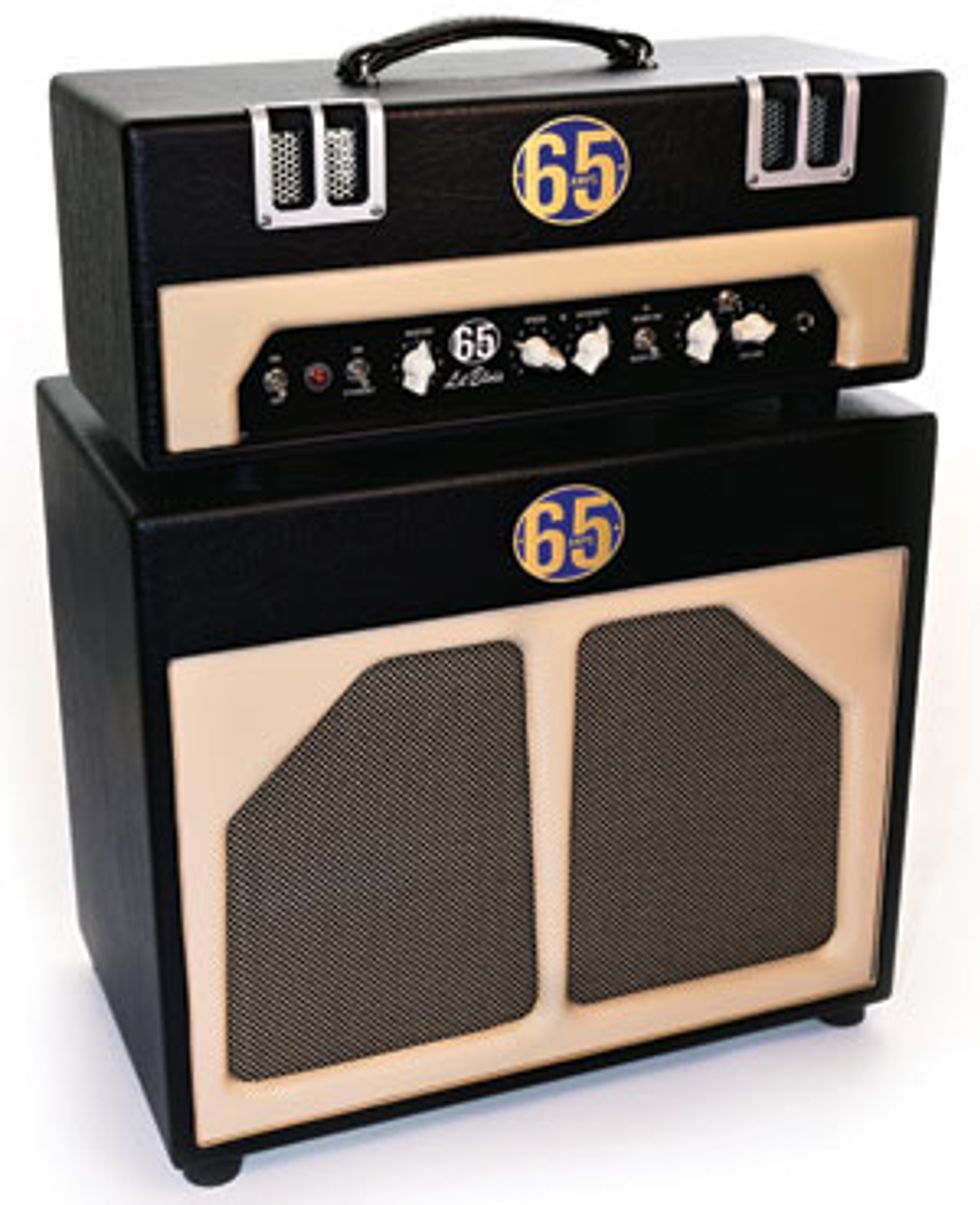 | |
| Download Example 1 '74 Les Paul Custom | |
| Download Example 2 2008 Strat w/trem | |
| Download Example 3 Danelectro '56 U2 reissue | |
| All clips recorded directly into Pro TOols HD2 Accel with a Pearlman TM-1 condenser mic. No FX or EQ. | |
According to 65Amps, the Lil’ Elvis was inspired by some lost designs from one of the best amp designers of the early ’60s. The review unit is a 1x12 combo (also sold in head/cab configuration) powered by a pair of EL84s, three ECC83s and a 6CA4 rectifier. Controls are simple and to the point: a Volume and a Tone, followed by a tremolo circuit with knobs for Intensity and Speed (the Intensity knob doubles as the on/off switch when the footswitch isn’t plugged in) and finishes with a “Master Voltage” knob. There are also two toggle switches on the front panel: a “Smooth” mini-toggle and a “Bump On/Bump Off” switch. Impedance can be set to 16 or 8 ohms, and there are two speaker output jacks in case you want to power an external cab. The combo sports a Celestion 70th Anniversary G12H-30 speaker and a passive effects loop that 65Amps appropriately labels “FX loop.”
While the amp isn’t small, it’s still quite portable and not too heavy for its size. My old Mesa MK III 1x12 combo weighed as much as a half stack, so picking up the Lil’ Elvis was a welcome change. Looking very much like the little brother to the rest of the 65Amps line, the amp has a black and cream color scheme, basketweave grille, a split front and the unmistakable vents on top front of the amp. A nice touch is the beautifully designed and comfortable handle that makes carrying the amp so much easier than the typical harder and thinner handles on some of the other combos I’ve had over the years. Who says little things in life don’t matter?
Enough of my yapping ... Let’s Boogie!
During the time I had with Lil’ Elvis I was also in the midst of several recording projects that required a wide variety of guitars, stompboxes and pickups. The first guitar I played through it was a Les Paul Standard that was temporarily modified (no holes drilled!) to house a P-90 in the neck and a mini-humbucker from an old Epiphone Newport Baritone in the bridge. I set the Volume and Tone controls to a conservative halfway point and kept the Master Voltage full up. Right out of the gate the amp showed a wonderful, gritty tone that barked rudely with the P-90—a bit dark, but this was the neck pickup so it was expected. Cranking up the Tone knob proved that 10 was too much for that combination, so I backed it off to about 7… a perfect balance of clarity and grit with just enough edge to cut through the mix. The amp was set to the “Bump Off” position, so I toggled it on. Clearly a mid bump, it totally pushed the tone into angrier and more authoritative territory with a punch you could feel. The Bump toggle could easily be renamed “rude” and nobody would ever be the wiser.
The next guitar I plugged in was a stock 2008 Fender American Strat. This amp loves single-coil pickups. Back on the “Bump Off” position it took me into SVR territory with the Volume up at 7 and Tone at around 5. Once again I was treated to great clarity, dynamics and chime, as well as a “bigness” that normally doesn’t come from a 1x12 combo. There’s a lot of push in this amp even with the Master Voltage turned down low. Now, 65Amps claims that the Master Voltage is neither an attenuator, power scaler, nor a master volume, but whatever it is it works incredibly well. Pulling the master from full to completely counter-clockwise basically just reduces the volume from a roar to a whisper. Ninety-five percent of the tone and dynamics were still intact, and it’s hard to say if that five percent change came from the volume being lower, or just the fact that I can’t accept that it sounded just as good at the lowest setting. For years I’ve been looking for the best way to reduce volume for recording or the soundman, and dang it if they haven’t figured it out. I’m sold!
The third guitar was my trusty Danelectro Hodad Baritone from the mid-’90s. Three lipstick pickups never sounded so good. I pushed the Master back up to full and pulled the Volume down to around 11 o’clock while turning on the tremolo—instant surf-meets-spaghetti-western! The tremolo has a nice range of speed, from dripping-molasses slow to cardiac-arrest fast, and the Intensity knob can be backed down so the tremolo is barely leaking through, which was perfect for adding depth to the sound without calling too much attention to the effect. In my opinion the tremolo is one of the shining features of the Lil’ Elvis—and anything but an afterthought. I engaged the Bump switch and drove the amp harder. The way this amp moves from clean to overdrive is a thing of beauty. Even with the controls full-tilt you can simply roll back the volume on any guitar and instantly get into clean territory. And while this isn’t a modern-sounding amp or a metal amp, the distortion effortlessly rubs elbows with both Marshall and Vox tones and has plenty of gain on tap for most players.
Speaking of gain, I ended up trying a variety of pedals with the amp over the review period and found it very pedal-friendly. Perhaps it’s the simple front-end design that allows the signal to be bumped up so gracefully. It acts very much like an older Marshall to my ears; it doesn’t get soggy with more gain before the amp. The design exposed the true nature of the pedals, good or bad, without hesitation. Similarly, each different guitar’s characteristics were instantly identifiable, which is something I miss on designs that get too complex or add unnecessary gain stages. Pure tone is all you get.
The effects loop is simple and to the point. If you’re looking for more control over the signal levels it may be too simple for your needs, but I had no problems plugging in an Echoplex EP-3, as well as several delay pedals. Some signal loss is going to happen on a passive design but it didn’t take away from the tone, in my opinion. One feature that you won’t notice too much at lower volumes is the Smooth switch. Basically, it’s a crossover distortion removal circuit that comes into play at louder volumes. Flip it on when the amp is revved up and it removes the fizziness that comes along with crossover distortion. According to Dan Boul at 65Amps, your mic will notice it before your ears will, so those of us using it for recording will be happy the switch is there.
Elvis Has Left The Building
There is so much to like about this amp. It packs a man-sized wallop in a bite-sized package and serves up as greasy a tone as a fried peanut butter and banana sandwich. Killer tremolo and easy to set up, it pairs up great with any guitar you throw at it. Top it off with a range of tone from clean to beautiful, blooming distortion and the fact that it’s pedal friendly and you’ve got a winner. 65Amps nailed it on the Lil’ Elvis. So, thank you … thank you very much.
Buy if...
you want a compact, simple amp with complex tone at any volume.
Skip if...
channel switching and more knobs float your boat.
Rating...
MSRP $2195 (head); $2495 (combo) - 65 Amps - https://www.facebook.com/65amps/ |






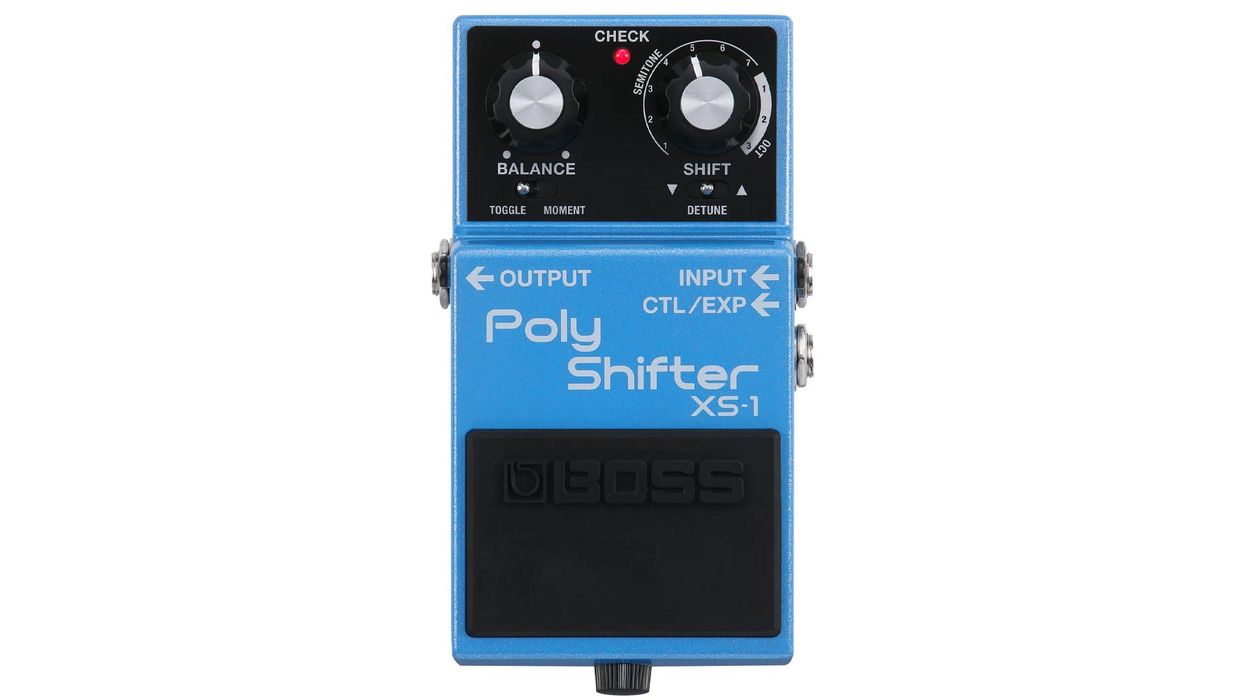
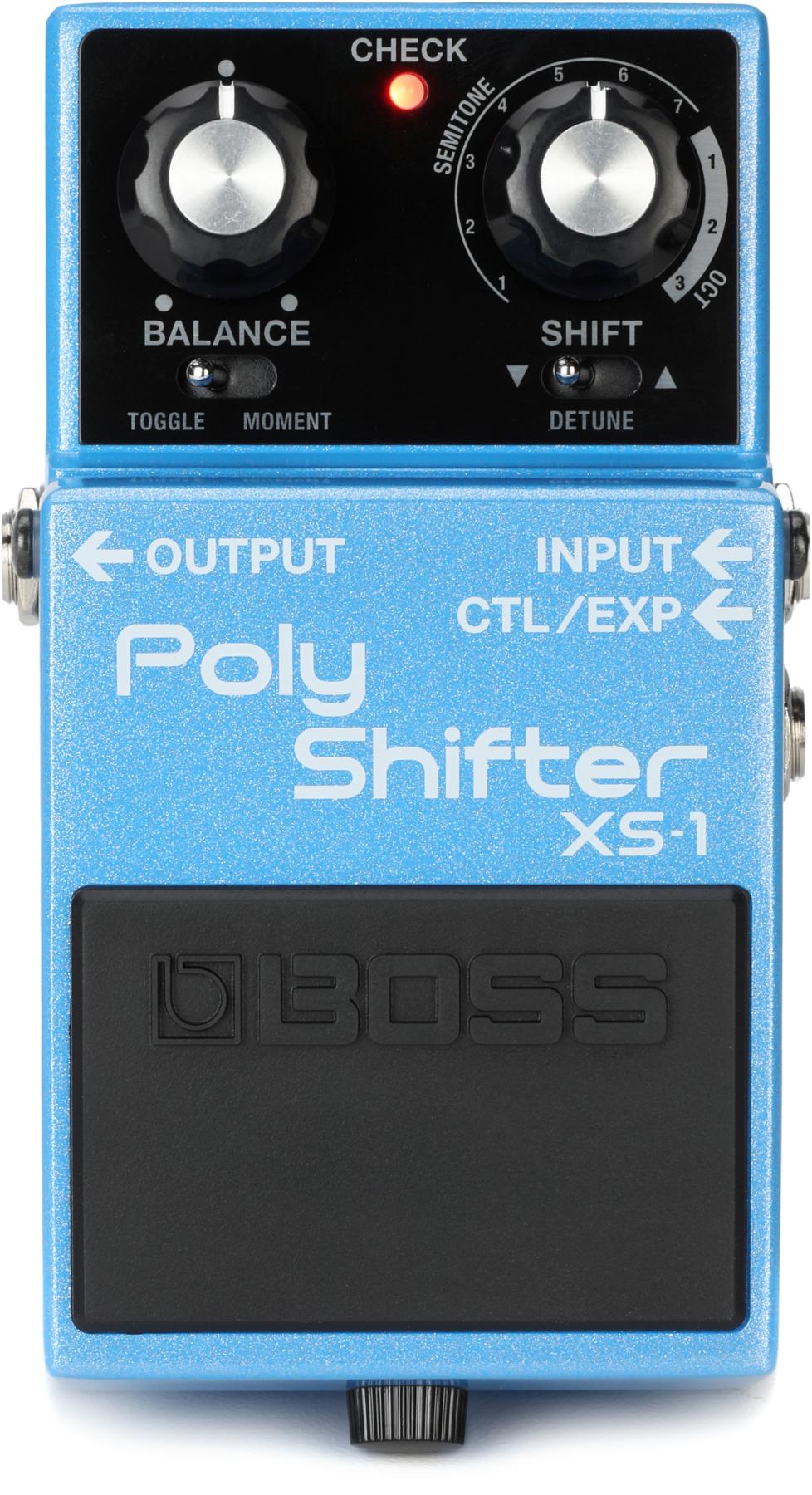
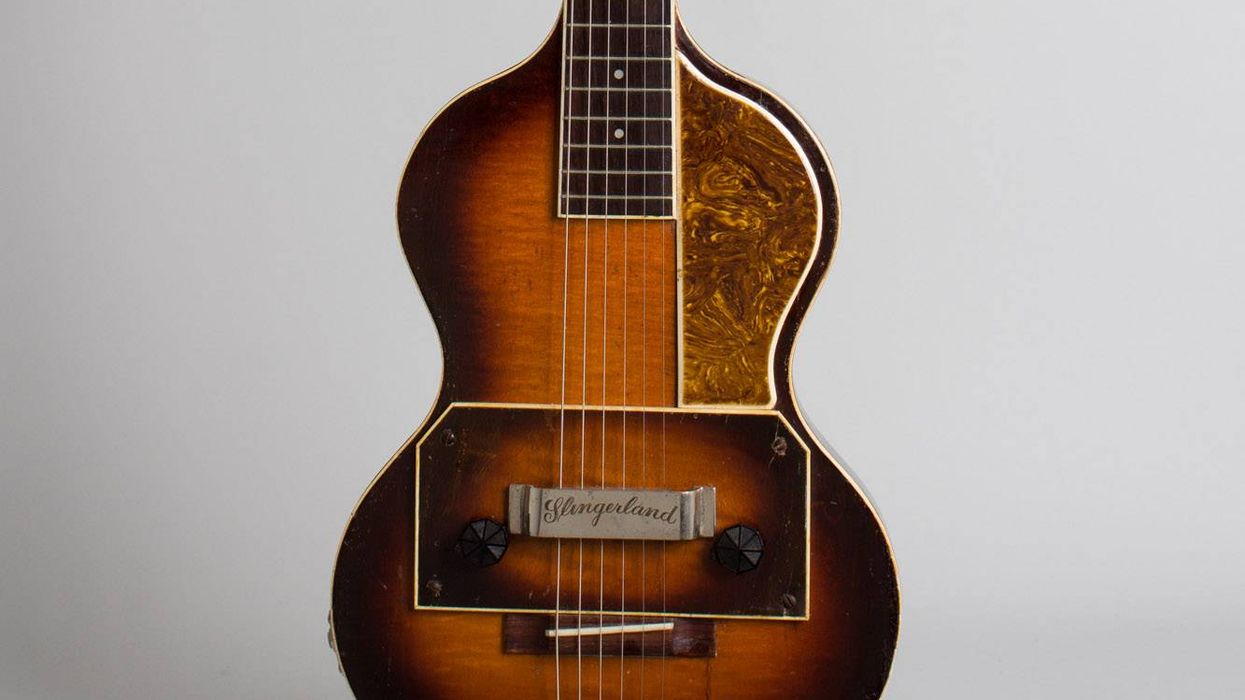


![Rig Rundown: John 5 [2026]](https://www.premierguitar.com/media-library/youtube.jpg?id=62681883&width=1245&height=700&quality=70&coordinates=0%2C45%2C0%2C45)
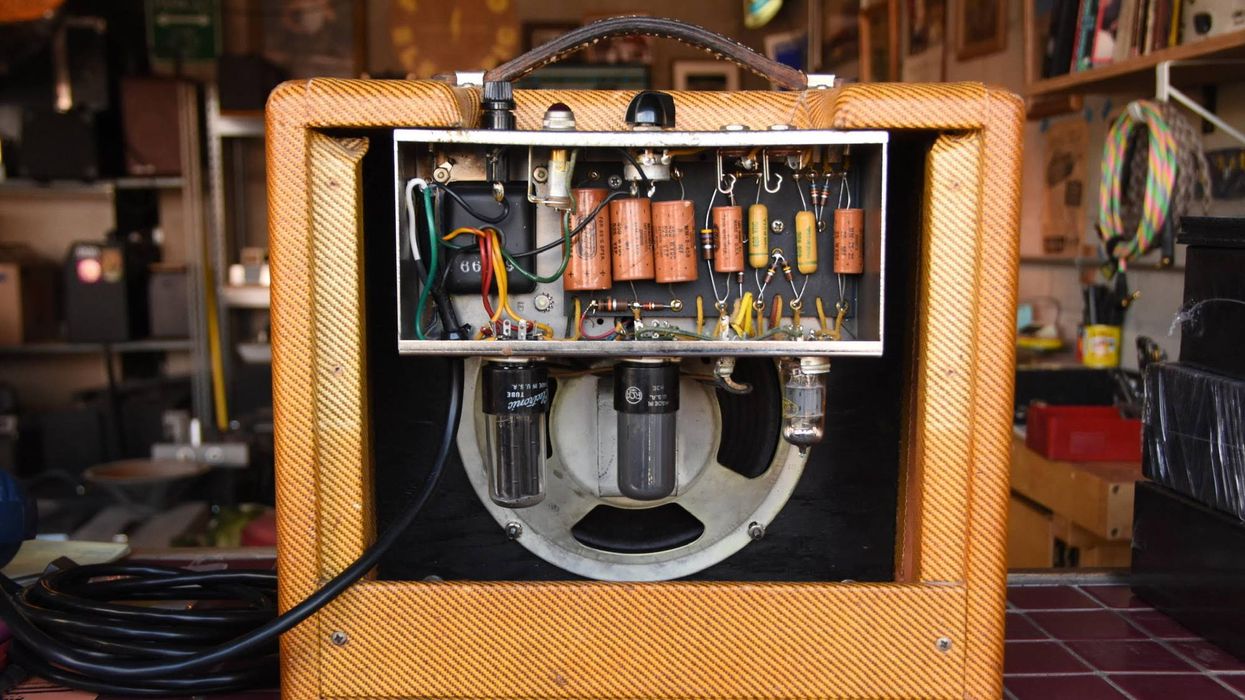

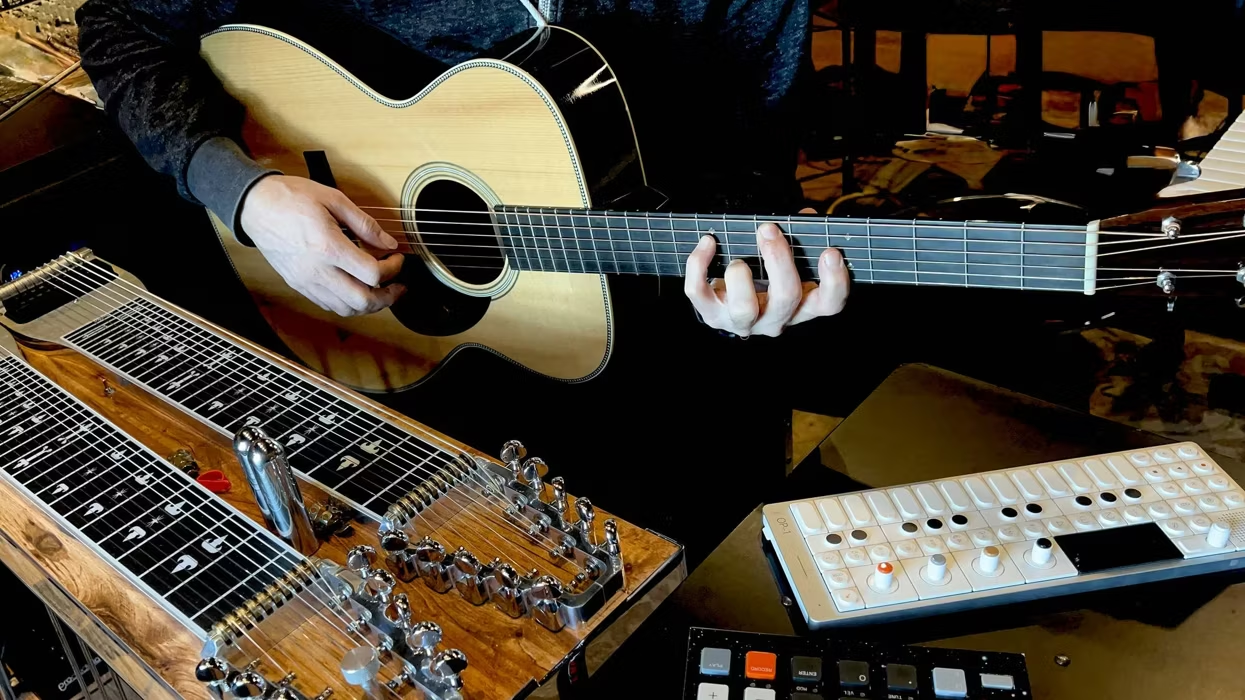
![Rig Rundown: Russian Circles’ Mike Sullivan [2025]](https://www.premierguitar.com/media-library/youtube.jpg?id=62303631&width=1245&height=700&quality=70&coordinates=0%2C0%2C0%2C0)








